The 2-second answer to the question, ‘What is Irish whiskey?’ is that it’s a spirit produced in Ireland.
But there’s much more to what is arguably one of the most popular Irish drinks than where it’s created.
How it’s aged, distilled and even how it’s spelled all play a part in making Irish whiskey a unique tipple!
In the guide below, you’ll find an Irish whiskey 101, with everything you need to know (without the BS!).
What is Irish whiskey?

Right, let’s get you up-to-speed on everything from what is Irish whiskey to how it tastes and what it’s made from. Dive on in!
1. What is Irish whiskey all about?
One of the world’s most famous styles of whiskey, Irish whiskey is a type of distilled drink that’s been around for almost 1,000 years. The most popular whiskey in the world during the 19th century, it’s still hugely popular thanks to the likes of Jameson and Bushmills.
2. What is Irish whiskey made from?
Typically triple distilled, Irish whiskey is made from unmalted barley that is usually blended with grain whiskey. Closed kilns are used to dry the malt, so it is only exposed to hot air and not smoke. Fermentation can include additional enzymes to prepare the starches for conversion to alcohol.
3. Difference between ‘whiskey’ and ‘whisky’
Confused? You should be! Two words for the same drink is a bit odd but that’s the difference between Irish Whiskey vs Scotch. The word ‘whiskey’ (or whisky) comes from the Irish ‘Uisce Beatha’, meaning water of life. Besides that missing ‘e’, it’s the peaty smokiness in scotch and the smoothness of Irish whiskey that usually distinguishes the two.
4. What it tastes like
This is the most common question we get asked, but it’s hard to answer, as varies hugely depending on the brand. Some Irish whiskey brands are smooth and sweet (see our guide to the best Irish whiskey to drink straight) while others are harsh on the palate, and leave a distinct aftertaste.
5. Similar drinks
Whiskey is made all over the world and comes in a number of different styles. While the process are fairly similar, each type is a different from each other and comes with an individual flavour profile. So whether it’s Irish, Scotch or Bourbon (see our comparison of Irish whiskey vs Bourbon), there’s only one way to find out which you prefer!
The history of Irish whiskey

Photo in the Public Domain
To adequately answer the question ‘What is Irish whiskey?’, we need to start at the beginning.
Now, although we have a guide to a brief history of Irish whiskey, I’m going to give you a good overview here, to save you having to click over.
When it comes to whiskey in Ireland, there’s a general belief that the story begins with monks. It’s said that these months had been travelling southern Europe and that they learned the art of distilling on their travels.
The then brought their newfound knowledge back to Ireland, and that’s where the tale of Irish whiskey really begins.
The monks and the origins of Irish whiskey
So, it wasn’t whiskey distillation that they encountered while in Europe – it was the technique for distilling perfume, randomly enough!
When they returned to Ireland they began using those methods to obtain a drinkable spirit instead and thus Irish whiskey was born.
Whiskey’s surge in popularity
Following the introduction of licences in the 17th century and official registration of distillers in the 18th century, whiskey production took off and demand for whiskey in Ireland grew significantly, driven both by large population growth, and by displacing the demand for imported spirits.
Although this time period wasn’t without its challenges as plenty of illicit whiskey was still being made outside of the large urban centres like Dublin and Cork.
In fact, so much illicit spirit was available during this era that the licensed distillers in Dublin complained that it could be obtained “as openly in the streets as they sell a loaf of bread”!
Its downfall
Eventually, however, Scotch whisky became the number one spirit in the 20th century and Irish whiskey fell by the wayside.
There are a few factors which lead to the eventual closure of Dublin and Ireland’s numerous distilleries, which you can read about here.
How Irish whiskey is made
The second step in answering the question ‘What is Irish whiskey?’ involves looking at how it’s produced.
You might simply enjoy the product at the end without giving the process too much thought, but all brewing/distilling is a science and there a few steps along the way to achieve that great bottle of whiskey. Here’s how it’s done:
Step 1: Malting
Barley is moistened and allowed to partially sprout, or germinate, a process called malting which secretes an enzyme that converts the barley’s starches to sugars.
Step 2: Mashing
Grains that are being used—like corn, wheat, or rye—are ground up, put in a large tank with hot water, and agitated. Once as much sugar as possible has been extracted, the mixture moves on to the fermentation stage.
Step 3: Fermentation
Fermentation occurs when the mash meets yeast, which eats up all the sugars in the liquid and converts them to alcohol. The process can take anywhere from 48 to 96 hours, with different fermentation times and yeast strains resulting in a variety of diverse flavours.
Step 4: Distillation
The process of distilling (usually through copper stills) increases the alcohol content of the liquid and brings out volatile components.
Step 5: Maturation
All Irish whiskey must be mashed, fermented, distilled to no more than 94.8% ABV, and matured in wooden casks, such as oak, and not exceed 700 liters for a minimum of three years.
The different types of Irish whiskey

There are many different types of Irish whiskey. Like many drinks of this strength, the flavour profile tends to vary from mild to severe in terms of the initial flavour on the palate to the after taste.
Here’s an overview of the different types of Irish whiskey (Blended, Grain, Single Pot Still and Single Malt):
1. Single malt Irish whiskey
Irish Single Malt whiskey is aged in oak for at least three years, and must be distilled from a mash of nothing other than malted barley at a single distillery.
It’s often rich, fruity and smoothy. Bushmills 21 Year Old and Teeling Single Malt are two excellent examples.
2. Single pot still whiskey
Once a very popular type of Irish whiskey, there are now only a handful of single pot still whiskeys on the market.
Put simply, single pot still whiskey is a style of Irish whiskey made at a single distillery from a mixed mash of malted and unmalted barley distilled in a pot still.
The style was defined by its inclusion of unmalted raw barley in the mash in addition to malt. Green Spot and Powers Three Swallow Release are are go-tos here.
3. Grain whiskey
While it doesn’t sound particularly appealing, there are some great grain whiskies out there to try!
Grain Irish whiskey is made using no more than 30% malted barley in combination with other whole unmalted cereals—usually corn, wheat, or barley—and is distilled in column stills.
Kilbeggan Single Grain, Glendalough double barrel single grain and Teeling Single Grain are all worth a look.
4. Blended whiskey
Blended Irish whiskey is a mixture of any two or more of the styles of malt, pot still, and grain whiskey.
While blending whiskey allows for the use of cheaper grains and does not require the same amount of time to age.
The flavour profile sometimes isn’t as strong or complex as a single malt, but it’s often very rich and smooth and there a good few Irish blended whiskies to sample.
Check out Tullamore D.E.W. Original, Powers Gold Label and Bushmills Black Bush 40%.
Our favourite Irish whiskey brands
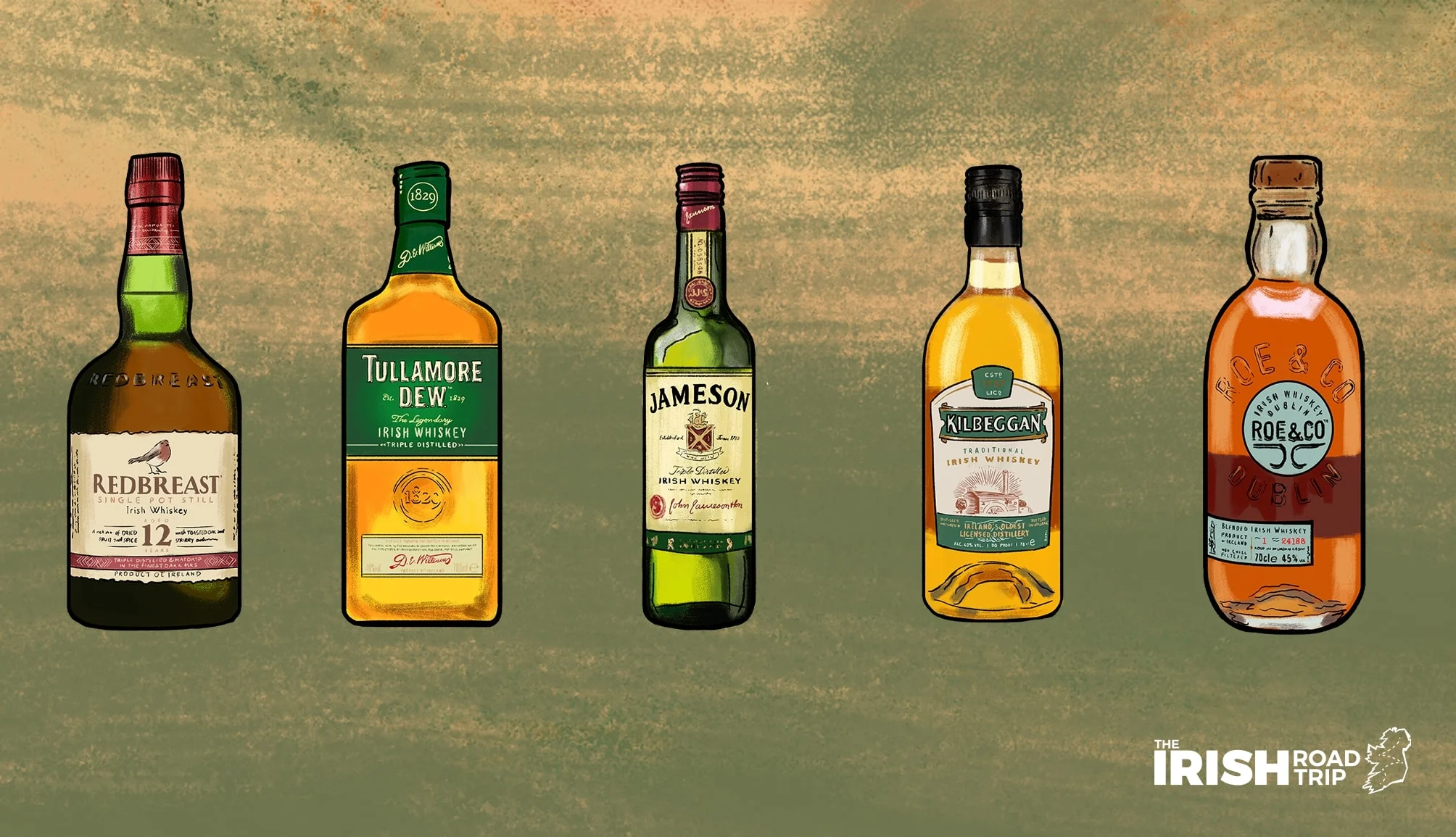
Now, we have a handy guide to the best Irish whiskey brands (with recommendations of brands for first timers and more seasoned Irish whiskey drinkers).
However, I’ll give you an overview of some of our favourite brands of Irish whiskey below. If you’re looking for drinks to make with whiskey, see our guide to the best Irish whiskey cocktails or our Jameson cocktails guide.
1. Redbreast 12 Year
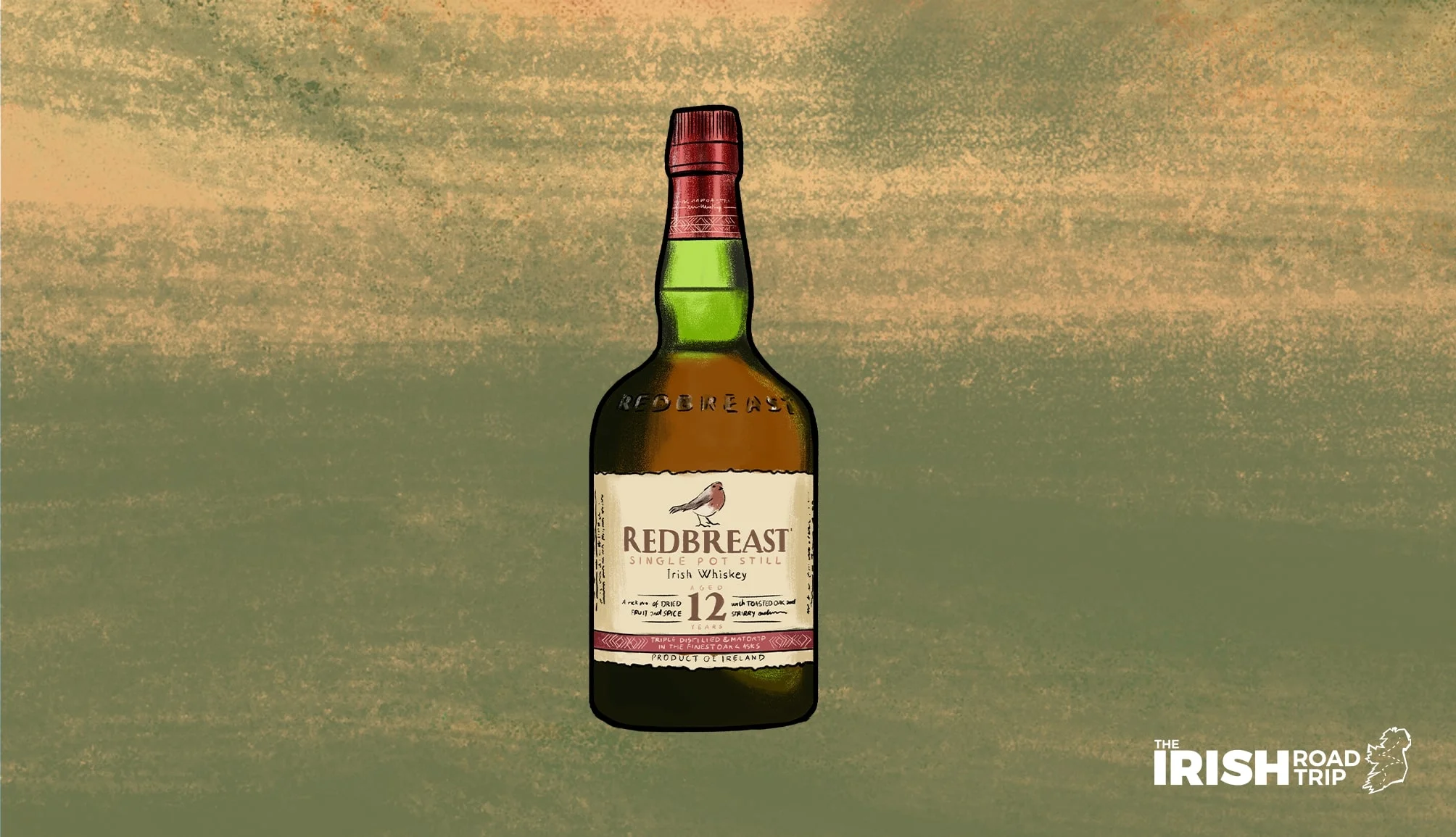
The largest-selling single pot still Irish whiskey in the world, Redbreast have been around for over 100 years now and their 12-Year-Old is an award-winning drop that you should seek out.
Their other variants include the 12 Cask Strength, 15-Year-Old, 21-Year-Old, Lustau Edition and the newly-added 27-Year-Old. They’re all worth exploring, but as we mentioned, definitely give the famous 12-Year-Old a try.
2. Tullamore Dew Irish Whiskey
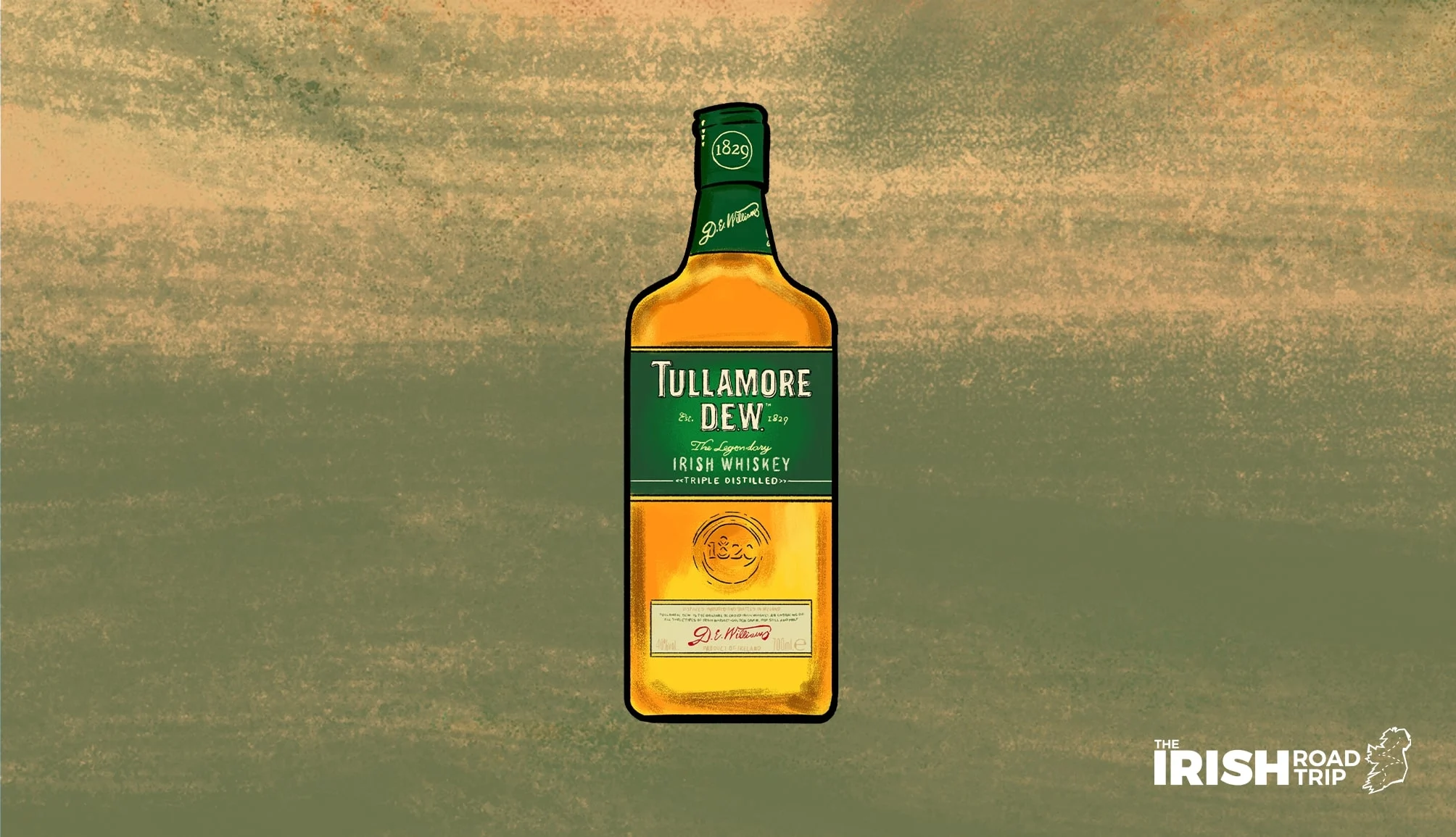
Created in 1829, Tullamore D.E.W is the second largest selling brand of Irish whiskey globally behind Jameson.
Interestingly, the DEW in its name doesn’t refer to the founder but the legendary General Manager Daniel E Williams, who helped the whiskey brand expand and prosper greatly. Its smooth and gentle complexity makes it a great Irish whiskey for newcomers to start with.
3. Teeling Single Grain Irish Whiskey
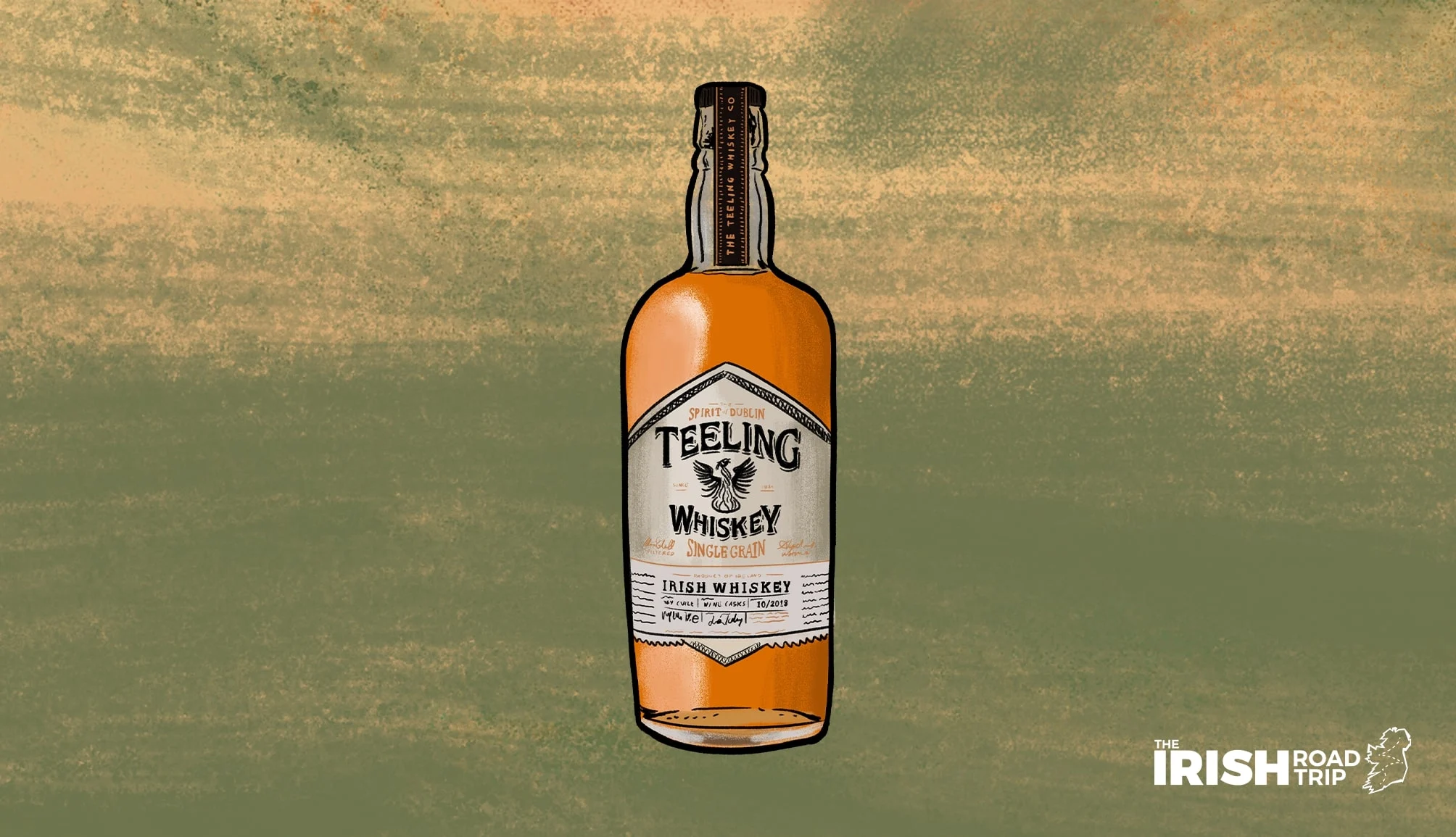
The first new distillery in Dublin for 125 years, Teeling opened in 2015 and is part of the historic Golden Triangle distilling district’s vibrant whiskey revival.
Matured in Californian Cabernet Sauvignon casks, Teeling’s Single Grain Irish Whiskey is sweet and fairly light but full of flavour. Give this one a go to see what the new generation of Dublin distillers are capable of.
4. Powers Gold Label
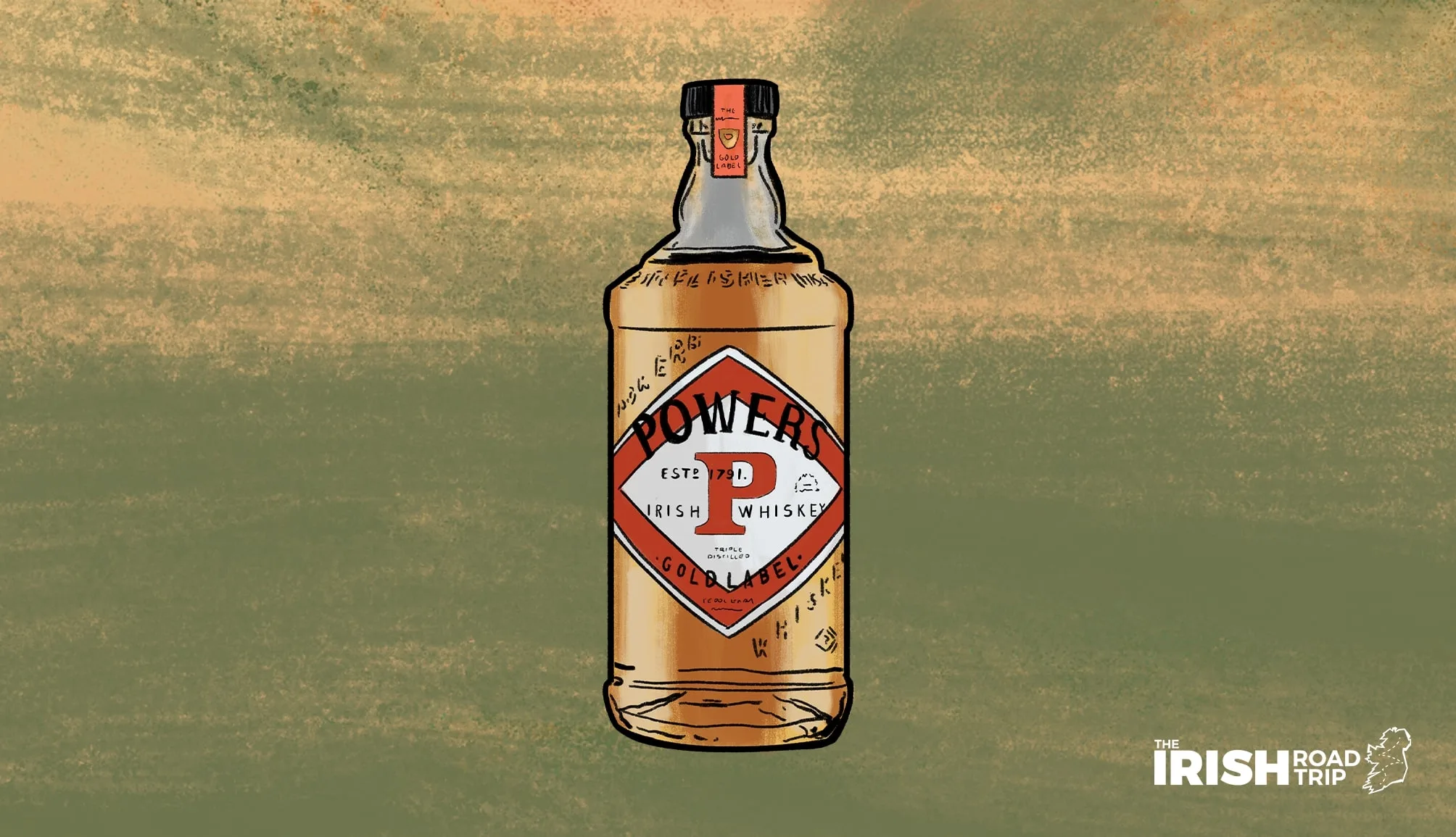
Although if you want a taste of history, look no further than Powers Gold Label! First introduced in 1791 by John Power & Son in Dublin, it was originally a single pot still whiskey but eventually evolved into a blend of pot still and grain whiskeys.
Powers Gold Label is the best-selling whiskey in Ireland and is aged between 5 and 6 years in Bourbon casks.
5. West Cork Irish Whiskey
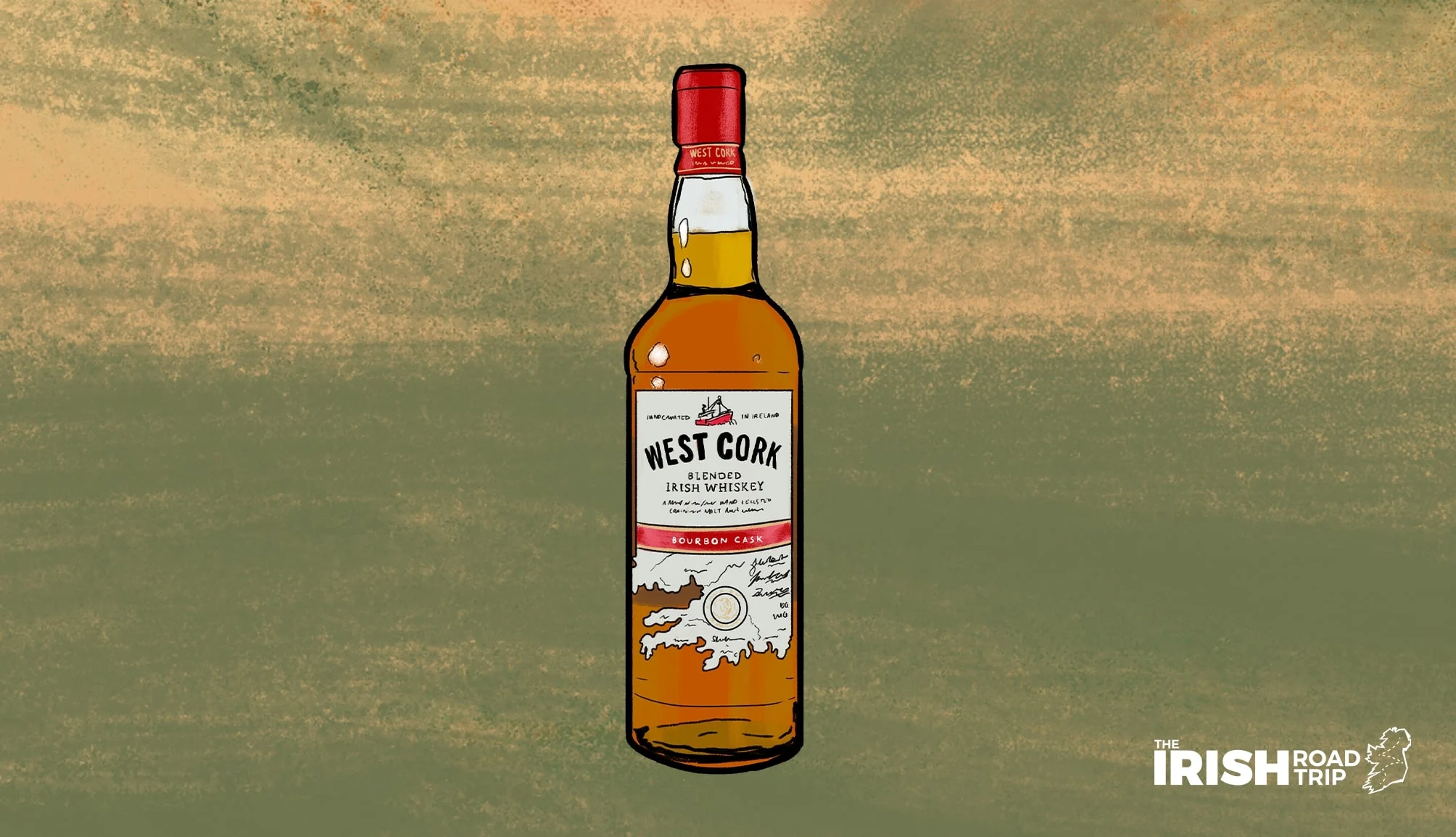
Founded in 2003 by childhood friends John O’Connell, Denis McCarthy and Ger McCarthy, this whiskey company have grown to a company of over 100 employees and their Irish whiskey is now sold in over 70 countries.
Based out of a small distillery in Skibbereen, their whiskey is matured entirely in bourbon casks and is a fine single malt if you can get your hands on it.
Whiskey distilleries in Ireland

Photos courtesy Diageo Ireland Brand Homes
Again, we have a guide to the various whiskey distilleries in Ireland, but I’ll take you through some of the more popular ones in the section below.
You’ll find everywhere from Bushmills and the Old Midleton Distillery to some of the newest whiskey distilleries in Dublin.
1. Old Bushmills Distillery
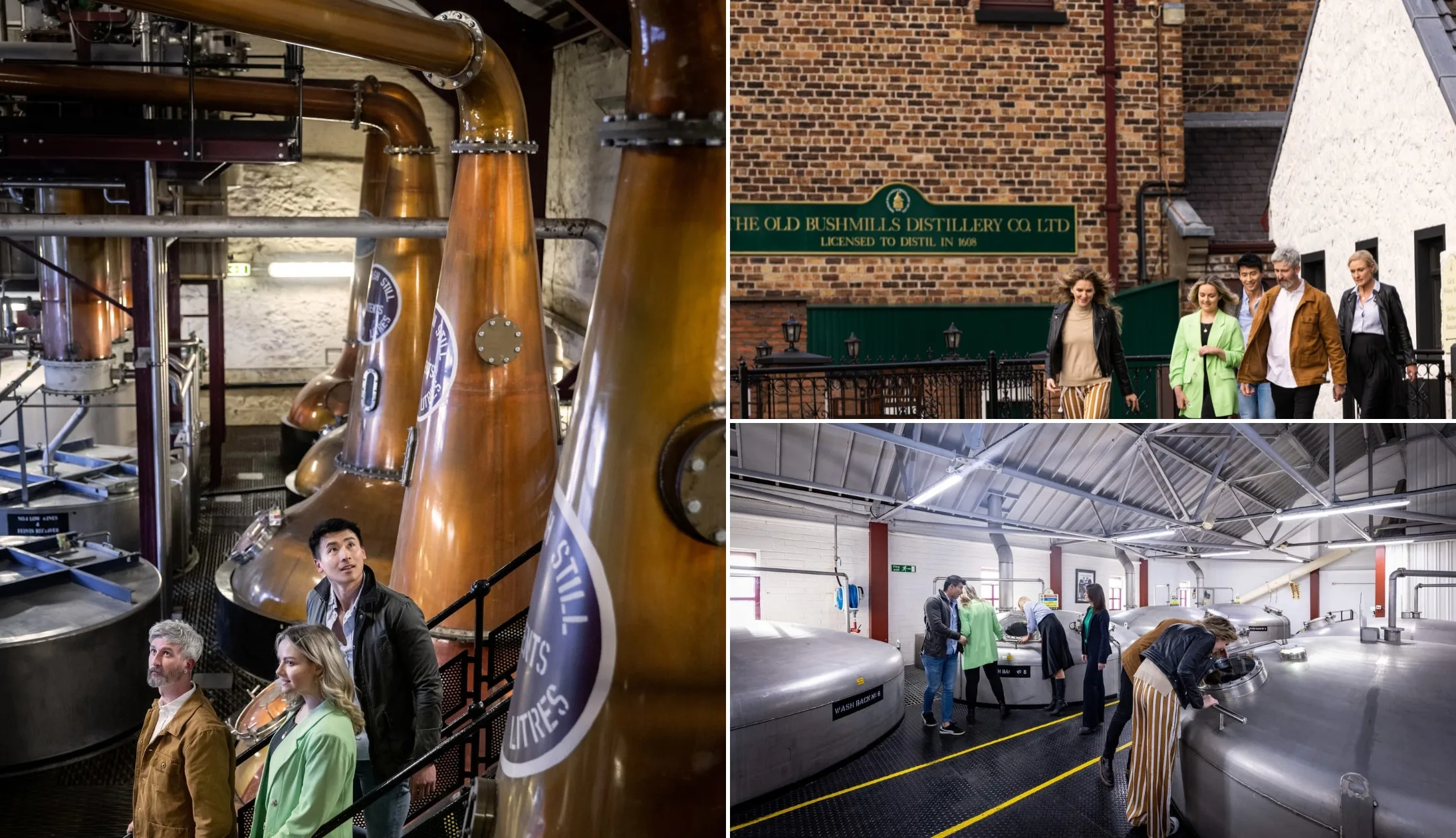
Photos courtesy of Tourism Northern Ireland
There are some great distilleries to check out in Ireland but one of the oldest and most famous resides way up North!
Sitting only a short drive from the county Antrim coast, the Old Bushmills Distillery has been in continuous operation since it was rebuilt after a fire in 1885 and is well worth a visit.
2. Midleton Distillery
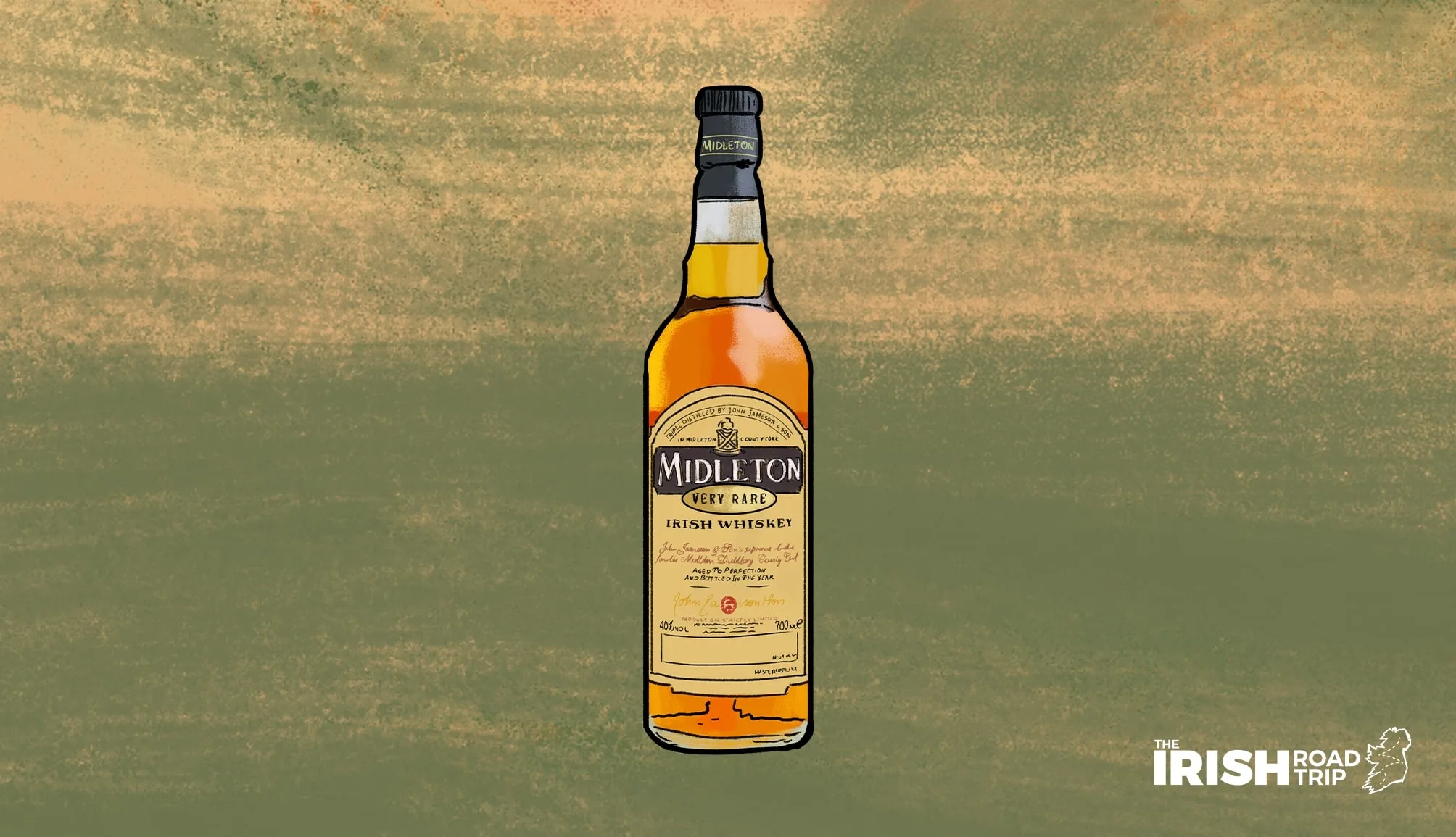
One of the most modern distilleries in the world, the Midleton Distillery also Ireland’s largest distillery and some of Ireland’s most popular whiskies are produced here – Jameson, Powers and Redbreast to name but a few.
If you want a fascinating window into the Irish whiskey industry, this spot down in county Cork is the place to come.
3. Teeling Whiskey Distillery
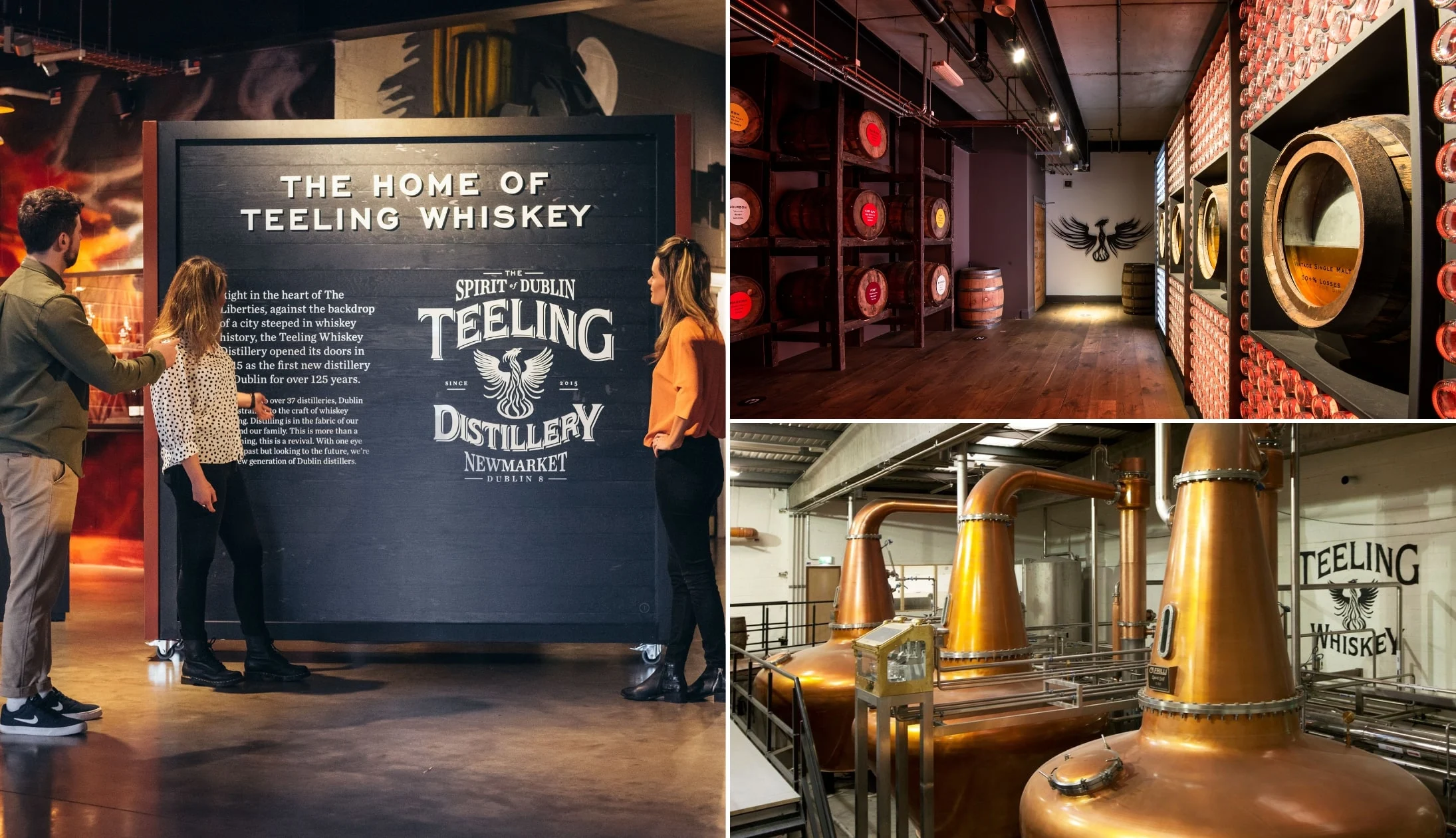
Photos courtesy Teeling Whiskey Distillery via Failte Ireland
As we mentioned earlier, this is the first new distillery in Dublin for 125 years and the Teeling Whiskey Distillery is only a stone’s throw from where the original family distillery stood.
They offer a cracking distillery tour that’s followed by a variety of on-site whiskey tastings. Why wouldn’t you want to go?!
4. Kilbeggan Distillery
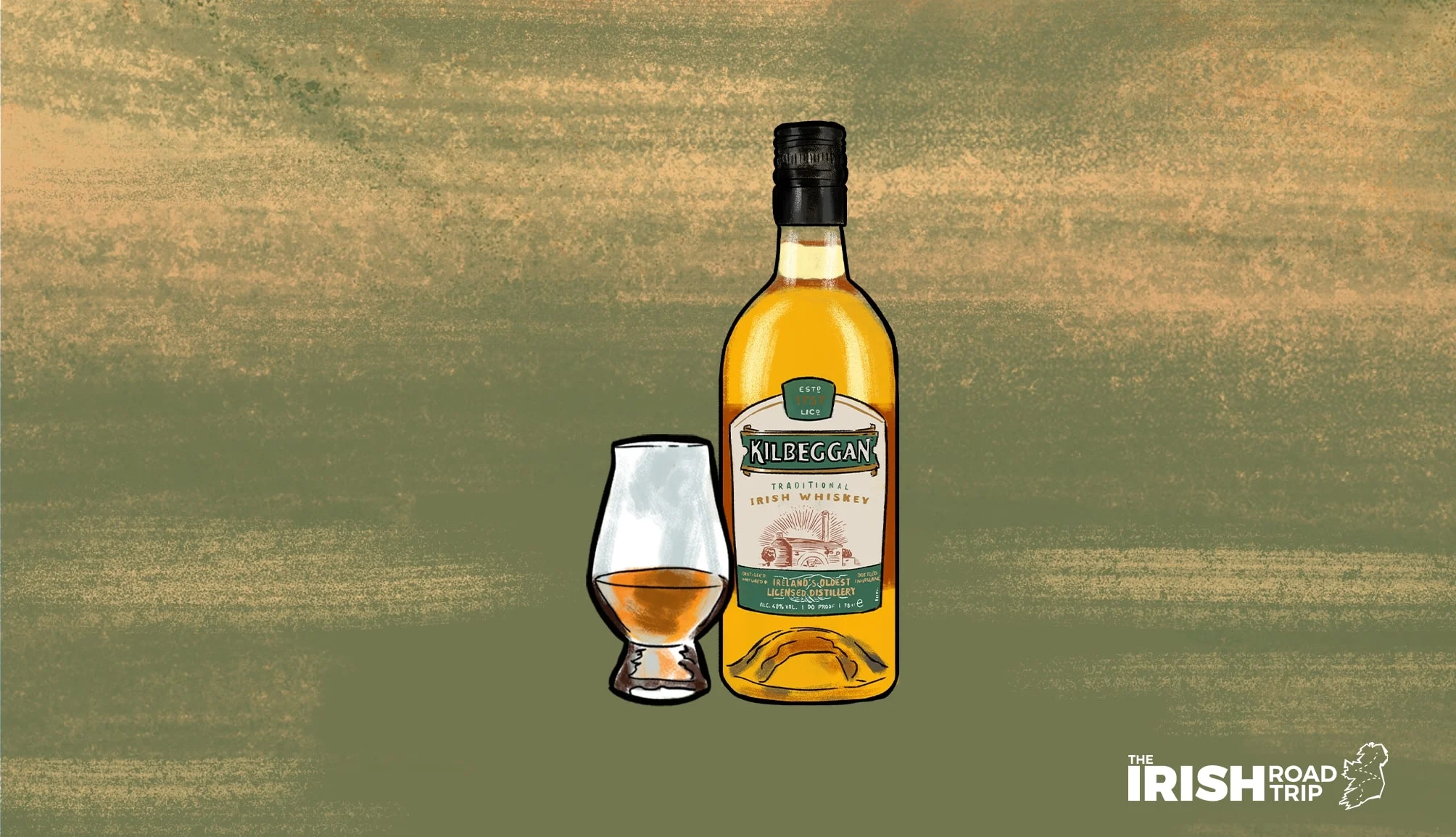
Despite protests from Bushmills (we won’t get into that dispute right now!), Kilbeggan claims to be Ireland’s oldest licensed distillery as it was established way back in 1757.
Based in Kilbeggan in County Westmeath, they offer a couple of interesting visitor experiences (one of which involves bottling your own whiskey!).
5. Tullamore Distillery

Photo left: Chris Hill. Others: Via Tullamore Dew on FB
As the second largest selling brand of Irish whiskey globally behind Jameson, you would expect Tullamore to have an impressive distillery and that is indeed the case! Come and visit their shiny new Visitor Centre in County Offaly and see how Tullamore create their famous DEW whiskies (and a whole lot more).
FAQs about what is Irish whiskey and more
We’ve had a lot of questions over the years asking about everything from ‘Why is Irish whiskey so good?’ to ‘What is a good Irish whiskey?’.
In the section below, we’ve popped in the most FAQs that we’ve received. If you have a question that we haven’t tackled, ask away in the comments section below.
What is Irish whiskey?
It is, in a nutshell, whiskey that is distilled in Ireland. It’s typically triple distilled and comes in one of 4 types (see guide above).
What makes Irish whiskey different?
Several things, as it happens: It’s spelling (‘whiskey’ not ‘whisky’), how it’s made (see our guide) and the category it falls under.

